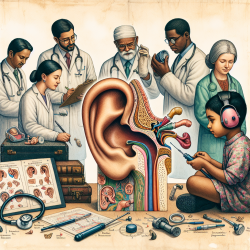Revolutionizing Data Extraction in Clinical Practice
In the ever-evolving field of healthcare, the ability to efficiently extract and utilize data from clinical reports is crucial. The research article titled "Automated ancillary cancer history classification for mesothelioma patients from free-text clinical reports" offers groundbreaking insights into how automated systems can be leveraged to improve data extraction processes. This blog post will explore how practitioners can enhance their skills by implementing the findings of this research or by delving deeper into further studies.
The Power of Natural Language Processing (NLP)
The study conducted by Wilson et al. (2010) highlights the use of Natural Language Processing (NLP) to automatically extract information from unstructured, free-text clinical documents. This is particularly relevant for practitioners dealing with mesothelioma patients, where clinical records often contain a mix of structured and unstructured data. The research demonstrates that NLP can significantly reduce the time and resources required for data extraction, offering a high level of accuracy comparable to human performance.
Key Findings and Implications for Practice
The study evaluated two methods, Dynamic-Window and ConText, for classifying cancer history in mesothelioma patients. Both methods achieved high accuracy, with F-measures of 91.8% and 91.6%, respectively, closely matching the human benchmark of 92.8%. This indicates that automated systems can effectively classify personal and family cancer histories, thus streamlining the process of data extraction.
- Dynamic-Window Method: This rule-based approach uses a bi-directional window search to identify cancer concepts and modifiers in clinical text.
- ConText Method: An extension of the NegEx algorithm, ConText is more robust in handling complex sentences and inconclusive concepts.
Practical Applications and Future Research
For practitioners, the implementation of NLP tools like the Hx application can revolutionize data extraction from clinical reports. This not only enhances efficiency but also allows healthcare professionals to focus more on patient care rather than administrative tasks. The study also underscores the importance of a domain-specific lexicon and negation extraction, suggesting areas for further research and improvement.
Future work could involve refining these algorithms to improve accuracy further and exploring their application in other clinical domains. As NLP technology continues to advance, its integration into clinical practice could lead to significant improvements in healthcare delivery and research.
Conclusion
The research by Wilson et al. (2010) provides compelling evidence that automated systems can match human performance in extracting data from clinical reports. By adopting these technologies, practitioners can enhance their efficiency and contribute to better healthcare outcomes. For those interested in exploring this area further, the original research paper offers a wealth of information and can be accessed here.










